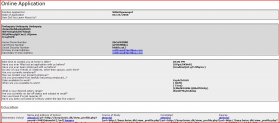About 95% of casual web surfers have JavaScript enabled in their browsers. Simple message asking to enable JavaScript for the page showed for remaining 5% is much better than annoying all your visitors every time they visit your site (or even page) by need of recognizing captcha images, answering anti-bot questions, solving brainteasers, etc.
There are automated solutions which can obfuscate HTML code and make it totally unreadable for spambots, except only those, which executes every JavaScript on the page, what is still computationally ineffective, especially in the age of so called "Web 2.0".
I am developing one of such solutions, Web Form Anti-Spam, so if anyone will ever be interested in my recommendations, feel free to contact me directly - I would like to avoid being called "forum spammer" here.

One of the simpliest methods to stop spam bots, is to rename fields to less obvious names and place hidden fields with old, frequently used names, like "email", "phone", "message", etc. For example:
...
<input type="text" name="i13kfsl" value="" />
<input type="text" name="email" value="" style="display:none" />
...
When processing form data by server script, ensure that "email" value is still empty and accept "i13kfsl" field value as e-mail address typed by visitor. This measure is helpful because spambots are trying to fill all fields they see, especially with frequently used names.
style="display:none" is simple method of hiding the bot-catching field. You can use different styles to achieve that effect, by making it zero-height, or positioning it absolutely at some negative position. Keeping hiding style in external css file will hide the style itself - spambots are not so smart to read, parse and interpret styles to find all catches.








